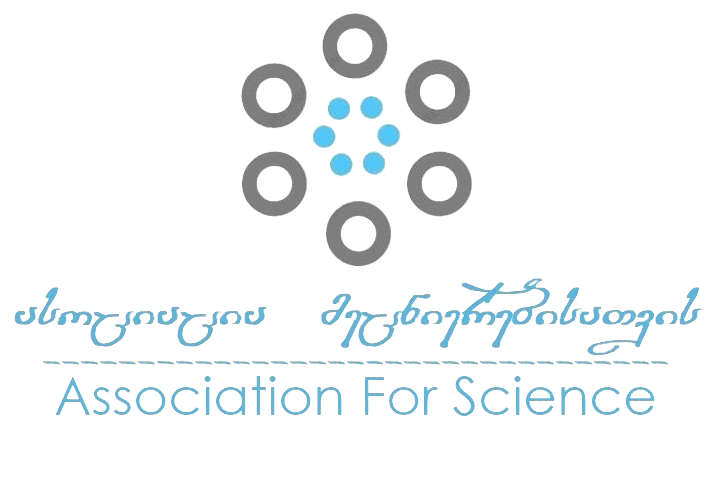For Some Phraseological Units in the Tao Dialect
DOI:
https://doi.org/10.52340/idw.2021.504Keywords:
the Tao dialect, phraseological units, semantics, an eye, brainAbstract
The Tao dialect is one of the southern dialects. The remnants of a dialect, spread across once extensive territory, are now preserved in a number of minor villages of Tao (Eliaskhevi, Tsitleqari, Khevai, Quabagi, Phishnarkhevi, Baslekari, Balkhi, Qvenobani, Balkhibari, Gaghmaqobai, Chevreli), as well as in the village, bordering Tao and Klarjeti – Binati.The Tao Georgian is noteworthy due to many aspects.The abstract looks upon some phraseological units, spread in the Tao Georgian dialect.The phraseological units of the Tao Georgian are diverse both from the semantic and structural point of view.The first component of a phraseological unit in Tao dialect is usually the word ‘eye’, the next ones are mostly often the verbs ‘hold (keep)’ or ‘have’, the meaning of the phrase being ‘appealing, taking to or falling in love’: is aqevr vinme gogoze t’vali k’onebia ki. In addition to the mentioned meanings of ‘keep/hold an eye’, more variations are realized through this expression in Tao dialect, such as ‘jinx or overlook in an evil way’: nonas t’valma dimicira.Somatic phraseological units express pain, having as their second consistent component the verb ‘inflamate’: ik’ kar gevdet’, ak’ t’avi ement’o; clikebi ent’eba. Fainting, connected with grief and distress is expressed by phrases, which have brain as their essential component: esa cevda, c’em kac’ma ckva dimilia, cevda ert’i t’ve ar vxedavdi, imaze imaze ckva cevda; aman ckva dimilia.
Downloads
References
ბარამიძე მ. (2014): კლარჯ მუჰაჯირთა მეტყველების ზოგიერთი თავისებურება // ბსუ ჰუმანიტარულ მეცნიერებათა ფაკულტეტი, ქართველოლოგიის ცენტრი, კრებული IX, ბათუმი, 9-16.
ბარამიძე მაია (2011): მასალები სამხრული კილოების ფრაზეოლოგიზმების ლექსიკონისათვის (შავშეთის ქართულის მიხედვით) // კულტურათაშორისი დიალოგები, I, 42-47.
თაყაიშვილი ა. (1961): ქართული ფრაზეოლოგიის საკითხები. თბილისი.
კლარჯეთი (2016): მონოგრაფია. ავტორთა ჯგუფი. ბათუმი.
მემიში ო. (1999): ქართულ-თურქული, თურქულ-ქართული ლექსიკონი. თბილისი, 1999.
ნიჟარაძე შ. (1971): ქართული ენის აჭარული დიალექტი, ლექსიკა. გამომცემლობა ,,საბჭოთა აჭარა“. ბათუმი.
ონიანი ალ. (1966): ქართული იდიომები. გამომცემლობა ,,ნაკადული“. თბილისი.
სახოკია თ. (1979): ქართული ხატოვანი სიტყვა-თქმანი. გამომცემლობა ,,მერანი“. თბილისი.
ტაო (2020): მონოგრაფია. ავტორთა ჯგუფი. ბათუმი.
ფუტკარაძე შ. (1993): ჩვენებურების ქართული. აჭარის ჟურნალ-გაზეთების გამომცემლობა. ბათუმი.
შავშეთი (2011): მონოგრაფია. ავტორთა ჯგუფი. ბათუმი.
ცეცხლაძე ნ. (2011): კალკური და ნახევრადკალკური ფრაზეოლოგიზმები ჩვენებურთა მეტყველებაში / /31-ე რესპუბლიკური დიალექტოლოგიური სამეცნიერო სესიის მასალები, თბილისი, 47-48.
ცეცხლაძე ნ. (2018): ფრაზეოლოგიზმთა კვლევის ასპექტები. გამომცემლობა ,,ივერიონი“. თბილისი.
ცინცაძე მ., ბარამიძე მ. (2014): კლარჯულის ლექსიკიდან // 34-ე რესპუბლიკური დიალექტოლოგიური სამეცნიერო სესიის მასალები, თბილისი, 87-89.







